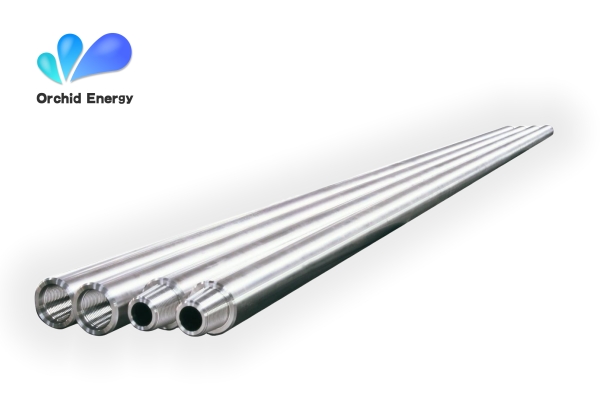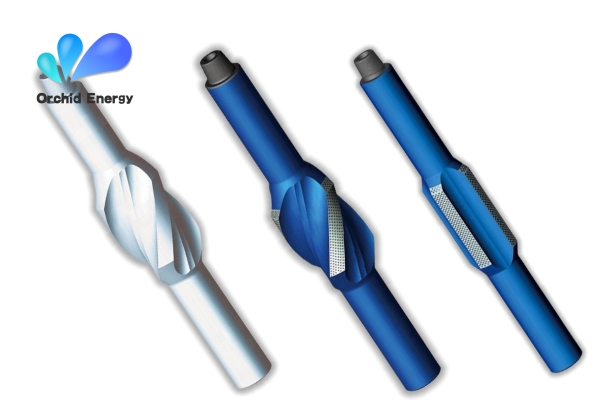-
ꁸ Top
-
ꂅ +86 159 1059 4147
-
ꀥ WhatsApp



-
HOME
-
ABOUT
-
PRODUCTS
- DRILLING TOOLS
- DRILLING MOTORS
- STABILIZERS
- DRILL COLLARS
- DRILLING JARS
- HYDRAULIC AGITATOR
- ANTI STICK-SLIP TOOL
- MULTIPLE ACTIVATION BYPASS VALVE
- DRILL PIPES
- NON-ROTATING PROTECTOR
- X-OVER & SUBS
- DRILL BITS
- MICRO REAMER
- FISHING TOOLS
- RELEASING SPEAR
- RELEASING AND CIRCULATING OVERSHOT
- REVERSE CIRCULATION JUNK BASKET
- JUNK SUB
- FISHING MAGNET
- SAFETY JOINT
- TAPER TAP
- DIE COLLAR
- IMPRESSION BLOCK
- DITCH MAGNET
- MILLING SHOES
- WASHOVER PIPE
- IBOPs
- KELLY VALVE
- FLOAT VALVE
- FULL OPENING SAFETY VALVE
- TOP DRIVE IBOP
- INSIDE BOP
- DROP-IN CHECK VALVE
- WELLBORE CLEANING TOOLS
- CASING SCRAPER
- NON-ROTARY CASING SCRAPER
- CASING BRUSH
- CUTTING BED IMPELLER
- STRING MAGNET
- ROTARY CASING GUIDER
- CASING CUTTER
- SECTION MILL
- WELLHEAD TOOLS
- ELEVATORS
- ELEVATOR LINKS
- POWER TONGS
- MANUAL TONGS
- SLIPS
- SPIDERS
- SPINNING WRENCH
- BUSHINGS
- DRILLING EQUIPMENTS
- MUD PUMP
- VALVE SEAT AND BODY
- PISTON
- CYLINDER LINER
- HYDRAULIC BUCKING UNIT
- JAR TESTER
- FRAC PUMP VALVE RUBBER
- FRAC PUMP VALVE BODY
- FRAC PUMP VALVE SEAT
- FRAC PUMP PLUNGER PACKING
-
PRESS
-
CONTACT


-
HOME
-
ABOUT
-
PRODUCTS
- DRILLING TOOLS
- DRILLING MOTORS
- STABILIZERS
- DRILL COLLARS
- DRILLING JARS
- HYDRAULIC AGITATOR
- ANTI STICK-SLIP TOOL
- MULTIPLE ACTIVATION BYPASS VALVE
- DRILL PIPES
- NON-ROTATING PROTECTOR
- X-OVER & SUBS
- DRILL BITS
- MICRO REAMER
- FISHING TOOLS
- RELEASING SPEAR
- RELEASING AND CIRCULATING OVERSHOT
- REVERSE CIRCULATION JUNK BASKET
- JUNK SUB
- FISHING MAGNET
- SAFETY JOINT
- TAPER TAP
- DIE COLLAR
- IMPRESSION BLOCK
- DITCH MAGNET
- MILLING SHOES
- WASHOVER PIPE
- IBOPs
- KELLY VALVE
- FLOAT VALVE
- FULL OPENING SAFETY VALVE
- TOP DRIVE IBOP
- INSIDE BOP
- DROP-IN CHECK VALVE
- WELLBORE CLEANING TOOLS
- CASING SCRAPER
- NON-ROTARY CASING SCRAPER
- CASING BRUSH
- CUTTING BED IMPELLER
- STRING MAGNET
- ROTARY CASING GUIDER
- CASING CUTTER
- SECTION MILL
- WELLHEAD TOOLS
- ELEVATORS
- ELEVATOR LINKS
- POWER TONGS
- MANUAL TONGS
- SLIPS
- SPIDERS
- SPINNING WRENCH
- BUSHINGS
- DRILLING EQUIPMENTS
- MUD PUMP
- VALVE SEAT AND BODY
- PISTON
- CYLINDER LINER
- HYDRAULIC BUCKING UNIT
- JAR TESTER
- FRAC PUMP VALVE RUBBER
- FRAC PUMP VALVE BODY
- FRAC PUMP VALVE SEAT
- FRAC PUMP PLUNGER PACKING
-
PRESS
-
CONTACT
Guide to Bottom Hole Assembly (BHA)
Introduction:
The Bottom Hole Assembly (BHA) is a crucial component in drilling operations, comprising various tools and equipment. This blog will provide an in-depth understanding of BHA components, exploration methods for combination parameter design, and real-world applications in oil fields. Furthermore, a real case study will be presented, including actual data, which will be summarized in a table for better comprehension.
1. Components of Bottom Hole Assembly (BHA):
The BHA consists of several components, each serving a specific purpose:
1.1 Drill Bit:
The drill bit is responsible for cutting through the rock formations, varying in types such as PDC (Polycrystalline Diamond Compact) bits and roller cone bits, depending on the drilling requirements.

1.2 Drill Collars:
Drill collars provide weight and rigidity to the drill string, enabling efficient transmission of weight to the drill bit and maintaining drill string stability.

1.3 Stabilizers:
Stabilizers prevent the drill string from wobbling or deviating from the desired trajectory. They are typically located above the drill bit and act as a stabilizing point against the sidewall of the wellbore.

1.4 Mud Motors:
Mud motors convert hydraulic energy from the drilling fluid (mud) into rotational energy, transferring power to the drill bit. They enable directional drilling by allowing controlled changes in the well's trajectory.

1.5 Measurement While Drilling (MWD) Tools:
MWD tools provide real-time downhole measurements, including drilling parameters such as inclination, azimuth, and formation characteristics. This data aids in wellbore placement and overall drilling optimization.
2. Evaluation Methods for Combination Parameter Design:
Combination parameter design involves determining optimal configurations for different BHA components. Evaluation methods commonly used include:
2.1 Mathematical Modeling:
Mathematical models use algorithms to optimize BHA designs by considering various parameters, such as weight, torque, bit speed, and rock properties. These models simulate the drilling process to identify the most efficient configurations.
2.2 Computer-Aided Design (CAD):
CAD software allows engineers to virtually design and evaluate BHAs, considering mechanical constraints, drilling objectives, and other factors. CAD tools enable efficient and accurate visualization and analysis of BHA performance.
3. Application of Bottom Hole Assembly in Oil Fields:
The BHA plays a crucial role in enhancing drilling efficiency and optimizing wellbore placement in oil fields. Some notable applications include:
3.1 Directional Drilling:
Mud motors and MWD tools within the BHA enable precise control over the well's trajectory, facilitating horizontal drilling and accessing specific target zones. This technique maximizes reservoir exposure and enhances hydrocarbon production.
3.2 Wellbore Stability:
Proper design and placement of stabilizers within the BHA enhance wellbore stability, minimizing drilling-related issues such as hole enlargement, caving, or collapse. This ensures successful drilling operations and reduces costly interventions.
3.3 Formation Evaluation:
MWD tools provide real-time data on formation characteristics during drilling. Incorporating this information into BHA design and decision-making processes helps optimize well placement, reduce risks, and enhance reservoir evaluation.
4. Real Case Study: Optimized BHA Design for Enhanced Drilling Performance
In a recent drilling operation at an offshore oil field, an optimized BHA design was implemented to improve drilling efficiency. The following table summarizes the key data and results achieved:
| Key Parameters | Pre-Optimization | Post-Optimization |
| Drilling ROP | 50 ft/hr | 70 ft/hr |
| Weight on Bit (WOB) | 30,000 lbs | 40,000 lbs |
| Deviation Angle | 15° | 10° |
| Dogleg Severity | 2°/100 ft | 0.5°/100 ft |
| Drilling Cost | $600,000 | $450,000 |
By optimizing the BHA design, the drilling rate of penetration (ROP) improved by 40%, achieving a higher drilling speed while reducing cost by approximately 25%. The deviation angle and dogleg severity were also improved, allowing for accurate well placement.
Conclusion:
The Bottom Hole Assembly (BHA) is a critical component in drilling operations, comprising various tools and equipment. By understanding its components, utilization of evaluation methods for combination parameter design, and practical applications in oil fields, operators can optimize drilling performance and achieve cost efficiencies.
The real case study exemplifies how an optimized BHA design led to significant improvements in drilling ROP, well placement accuracy, and cost reduction. By continuously evaluating and refining BHA configurations based on mathematical modeling and computer-aided design tools, operators can enhance drilling efficiency, reduce risks, and maximize productivity in oil fields.
Tags: Stabilizer | PDC Drill Bit | Drill Collar | Drilling Motors





